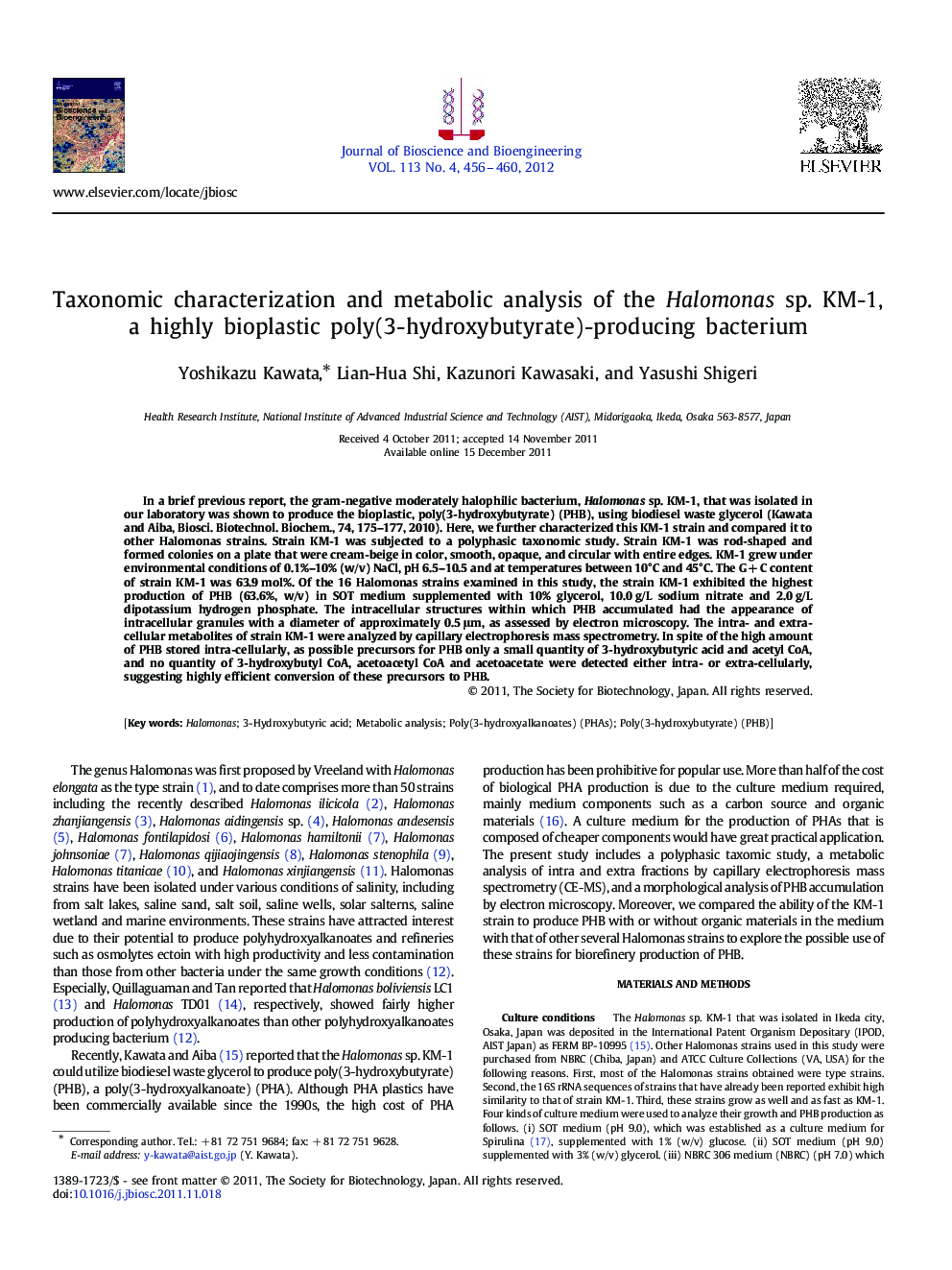| Article ID | Journal | Published Year | Pages | File Type |
|---|---|---|---|---|
| 21306 | Journal of Bioscience and Bioengineering | 2012 | 5 Pages |
In a brief previous report, the gram-negative moderately halophilic bacterium, Halomonas sp. KM-1, that was isolated in our laboratory was shown to produce the bioplastic, poly(3-hydroxybutyrate) (PHB), using biodiesel waste glycerol (Kawata and Aiba, Biosci. Biotechnol. Biochem., 74, 175–177, 2010). Here, we further characterized this KM-1 strain and compared it to other Halomonas strains. Strain KM-1 was subjected to a polyphasic taxonomic study. Strain KM-1 was rod-shaped and formed colonies on a plate that were cream-beige in color, smooth, opaque, and circular with entire edges. KM-1 grew under environmental conditions of 0.1%–10% (w/v) NaCl, pH 6.5–10.5 and at temperatures between 10°C and 45°C. The G + C content of strain KM-1 was 63.9 mol%. Of the 16 Halomonas strains examined in this study, the strain KM-1 exhibited the highest production of PHB (63.6%, w/v) in SOT medium supplemented with 10% glycerol, 10.0 g/L sodium nitrate and 2.0 g/L dipotassium hydrogen phosphate. The intracellular structures within which PHB accumulated had the appearance of intracellular granules with a diameter of approximately 0.5 μm, as assessed by electron microscopy. The intra- and extra-cellular metabolites of strain KM-1 were analyzed by capillary electrophoresis mass spectrometry. In spite of the high amount of PHB stored intra-cellularly, as possible precursors for PHB only a small quantity of 3-hydroxybutyric acid and acetyl CoA, and no quantity of 3-hydroxybutyl CoA, acetoacetyl CoA and acetoacetate were detected either intra- or extra-cellularly, suggesting highly efficient conversion of these precursors to PHB.
